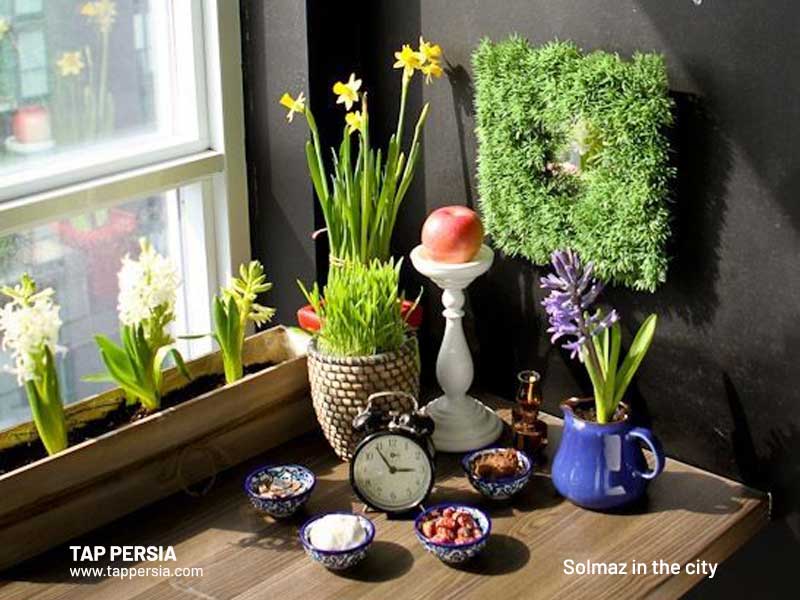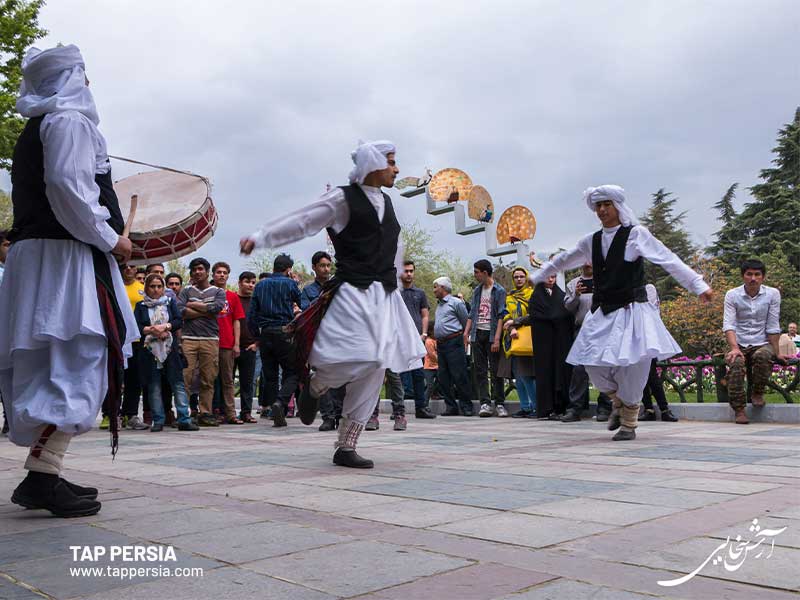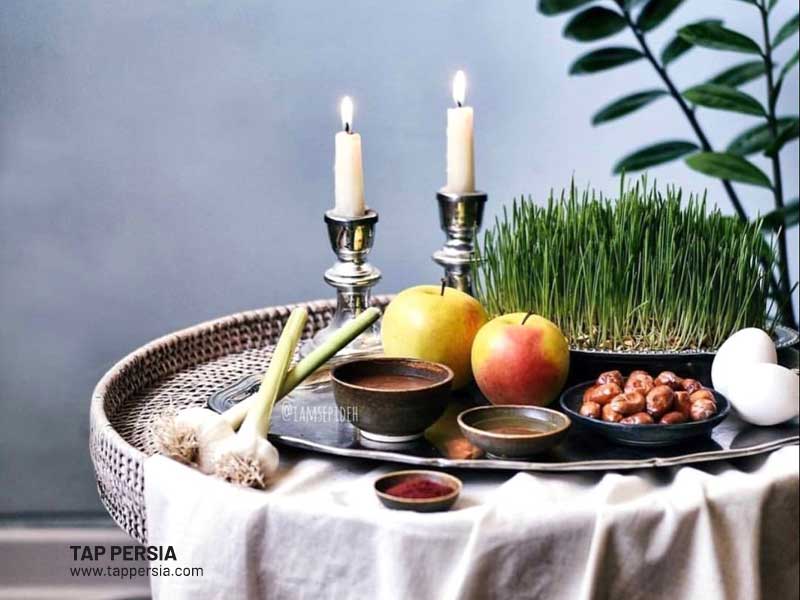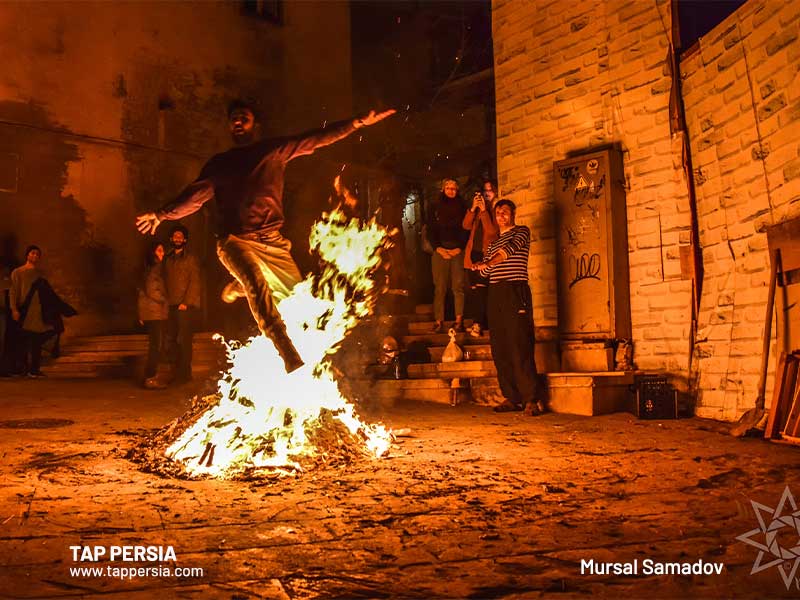
Iranians celebrate Nowruz, also known as the Persian New Year, as the start of the new year. Literally meaning “new day,” the term in Persian means. The terms “now” and “ruz,” which mean new and day, respectively, make up the phrase “Nowruz,” which may be broken down into its component parts to help with translation. Many groups around the world, even those without Iranian ancestry, observe the holiday.
The day is noteworthy due to a number of factors, including the vernal equinox, which ushers in spring in the Northern Hemisphere, and the fact that it is the first day of the Iranian calendar. The day might be observed on March 21, March 20, or March 22 depending on the location(Persian Calendar). Actually, the Solar Hijri algorithmic calendar is what determines the time of day.
Nowruz an Ancient Iranian celebration
If we go back in time to ancient Iran, we will see that the Iranians were a living tribe that made the most of every occasion to rejoice, spend time with one another, and give gratitude to God. Six were sporadic festivities or anniversaries of six inventions, whereas seven were necessary and unavoidable among the countless celebrations held on various occasions:
- Mid-Yuzarm Gah – Mid-Spring Celebration
- Mead Yoshum Gah – Mid-Summer Celebration
- Piti Shahim Gah – the season for gathering grain and the anniversary of the earth’s creation
- Ia Serum Gah- the day marking the creation of the plant
- Mead Yarim Gah – A four-legged creature’s creation is commemorated on this day every year
- Hamsad Midam Gah – the date marking the creation of humans
But Nowruz was the eighth festival that had to be observed in ancient Iran. A festival that has been observed for thousands of years and is still regarded as a public holiday in Iran. Special customs were observed throughout the hosting of this ceremony, some of which are being followed today. Although they have undergone significant modification, the Persian new year nevertheless retains its individuality.
Nowruz according to Science and Astronomical Phenomenon
Nowruz, according to science and astronomy, is the day when the sun shines in the carrying tower (northern hemisphere) and is positioned over the equator. As a result, day and night are both equal and have a length of 12 hours everywhere in the earth. These are the indications of the first day of Farvardin, when nature awakens from its slumber and fresh life on earth starts. There is no better time than now to celebrate the Persian new year.
Historical Background of Nowruz
An old holiday called Nowruz is said to have originated up to 15,000 years ago. According to Iranian legend, Jamshid, the fourth King of the World, founded the first Nowruz by sparing humanity from a particularly brutal winter. Jamshid is credited with a number of inventions and improvements that enhanced the standard of living for his people and promoted the development of civilisation. He is particularly credited with introducing farming and animal husbandry to humans, replacing the practice of hunter-gatherers.
Because of this understanding, mankind was able to endure the worst winter, and as a result, they were able to celebrate the first Nowruz, which marks the beginning of spring and honors the revival of the natural world. The Zoroastrian faith later incorporated Nowruz, making it the most significant of its six yearly celebrations.
Although Nowruz continues to be the first day of spring and the Iranian new year, it also carries additional symbolic value in Zoroastrianism. Zoroaster, also known as Zarathustra, was a prophet who preached that there is only one deity and that life is a fight to uphold justice and order in the face of chaos.
Considering that the majority of people were illiterate at the time, spring was utilized as a metaphor for the final victory of good over evil and the return of the world to the condition of pristine creation that god intended it to be in.
Who Honors Nowruz?
It belongs to the Persian religion of Zoroastrianism, which goes back to the first millennium BC and predates both Christianity and Islam. Its teachings are dualistic as well as monotheistic since Ahuramazda, the highest deity is the architect of all that is good. Fire and water are revered as purification symbols in Zoroastrianism.
Since the reign of King Jamshid, Nowruz has continued to be observed in modern-day Iran. Eleven nations in the Middle East and the Caucasus have declared it a public holiday, including Iran, Afghanistan, Tajikistan, Pakistan, India, Azerbaijan, and Georgia. Minority communities in several nations throughout the world also witness it in addition to this. Nowruz was recognized by the United Nations (UN) in 2009 as a part of the Intangible Cultural Heritage of Humanity.
What Day is Nowruz?
Nowruz (also known as Nevruz, Nooruz, Navruz and Nauryz) will occur on March 20th on wednesday in 2024.
Nowruz Traditions

All of the Iranian customs associated with Nowruz have been observed in various places since the distant past in an effort to better life, increase family income, unlock the fortunes of young people, banish evil, and usher in kindness and benefits. Just a handful of the activities that people engage in to mark the occasion are as follows:
1.Khaneh Tekani (Spring cleaning)
In the month leading up to Nowruz, the commotion starts. Khaneh-Takani, or spring cleaning, is just around the corner, so roll up your sleeves. When you Khane Tekani, or “shake your house”, you clean it from top to bottom and then from bottom to top again, making sure there is no dust left behind. Care, responsibility, and patience should be used when doing it.
Khane-Takani is just one part of the preparation for Nowruz, though. It is not feasible to start the Iranian New Year in your old clothes; therefore, every member of the family has to get new clothes. This preparation procedure also includes purchasing or preparing sweets, fruits, and a unique blend of nuts called ajil.
2.The Count Down
Iranians wait with their relatives and friends for the exact time of “Tahvil”, the spring equinox, which happens a few days after Chahar Shanbeh Soori.
3.Haft Seen
Haft Seen, or Haft-Sin, is translated into “seven seen,” and it refers to the seven items that are always included in the phrase, all of which begin with the letter “S”. The Quran, mirrors, candles, and water are some of the other objects that are put on a Haft-Sin table according to custom. Also seen are colored fish and eggs.
During the final moments before the Persian New Year, the entire family congregates around the Haft-Sin table. They read the Qur’an in the hope that the coming year would bring them riches, success, and happiness:
Sabzeh
For rebirth and regeneration, plant a sprout or a clump of grass that will keep growing during the weeks before the holiday.
Senjed
Ideally, love would come in the shape of a delicious fruit from a lotus tree which symbolizes just that.
Sib
Apples are a sign of well-being and beauty.
Seer
Garlic, a symbol of medication and self-care
Samanu
A sweet pudding that symbolizes fertility and wealth
Serkeh
Vinegar, which elegantly represents the patience and experience that come with age
Sumac

Sumac is a Persian spice made from crushed sour red berries, symbolizing the sunrise of a new day
4.A Persian Santa Claus and Troubadour
Folk figures Amoo, or “Uncle” Nowruz, and his companion Haji Piruz, or Haji Firuz, announce the arrival of spring. Similar to Santa Claus, Uncle Nowruz is an elderly person with a white beard who distributes gifts to young people. His comical helper, Haji Piruz, performs joyful tunes and plays a tambourine or drum around the streets and plazas of the city. In an effort to gain some money for giving entertainment, men and boys blacken their faces with soot and dress like the figure while sporting bright red attire and a conical hat.
Some traditional accounts link him to a figure guarding the everlasting light of the ancient Zoroastrians, while others claim that Haji Firooz was really a black slave who provided entertainment during the Sassanid New Year (224 to 651 AD). The most plausible scenario, however, is that he was one of the two million or more black slaves that the Indian Ocean slave trade, which purportedly carried black slaves from Africa to Iran throughout the 19th century, included.
5.Eidi and gifts
Giving and receiving presents is one of the many enduring customs associated with Nowruz. The little ones are thrilled to get fresh banknotes and will be overjoyed to present them. Before the year came to a conclusion, the elders blessed the Quran by placing the Eid banknotes on it. They give them to the younger ones as Eidi gifts following the start of the year. Some people choose to give presents to their loved ones rather than cash.
6.Visiting each other (Did va Bazdid)
People probably realized in the past that one day we would be so consumed with troubles and daily life that we would never even get the chance to visit our loved ones. We have a long-standing custom of visiting and seeing one another around Nowruz, which is an excellent reason to get together at least once a year and celebrate this historic holiday with our loved ones.
7.Buying and Putting on New Clothes
It is usual to wear new clothing during the Nowruz holidays and when visiting in order to display the new items and make the most of their visibility.
Sizdah Be-dar (after Nowruz)
Iranians spend the day outside enjoying fun with family and friends on the 13th day of the New Year in an effort to banish the ill luck linked with the number 13. Many individuals take picnic lunches and visit parks or rural areas. The custom is referred to as “getting rid of the 13th” or sizdah bedar.
Iranians also throw away the sabzeh grass from the Haft Seen table, which was used to accumulate all of a family’s potential misfortune during Nowruz. Some single women tie grass blades into knots to represent the coupling of a man and a woman in an effort to find a spouse before the next Nowruz. Similar to April Fools’ Day in the United States, the Iranian festival “Lie of the Thirteen” is celebrated by performing practical jokes.
8.Chaharshanbe Suri or Fire Festival

The penultimate Tuesday before Norwuz is called Shab-e chahar shanbeh suri, which translates to “Eve of Red Wednesday.” People leap over bonfires in public spaces during the day while chanting, “Zardi-ye man az toh, sorkhi-ye toh az man!” This means, “Give me your wonderful red color and take back my terrible pallor!” in its precise translation.
On the final Thursday of the year, Iranians visit the graves of their ancestors to spend time with their deceased loved ones.
What Food Do People Eat for Nowruz?
In Iran, as part of the Chahar Shanbeh Soori festival, roasted garbanzo beans, pistachios, almonds, hazelnuts, apricots, raisins and dried figs are combined to make a special soup. Another typical soup offered at Nowrouz is ash-e-reshteh (left). Noodles and a variety of beans make up the filling of the hearty concoction.
Untangling the noodle knots is said to bring good fortune and they are considered to represent the various possibilities for the upcoming year. Fish and rice are frequently offered during Nowrouz as sabzi polo Mahi. In an effort to represent the approaching spring, green herbs are incorporated with the rice.

Additionally common at this time of year are various desserts. Here are a few of these delicious treats:
- Naan berenji: rice flour-based cookies
- Baqlava: rosewater-sweetened flaky pastry
- Samanu: a delicious dessert made with wheat sprouts
- Noghl: sweetened almonds
Which Religion is Nowruz?
Zoroastrianism, an ancient Iranian faith, is where the Nowruz holiday got its start.
Do Christians celebrate Nowruz?
The event is observed by Muslims, Jews, Baha’is, Christians and Zoroastrians, but it is not particularly religious in nature. Since 2010, the day has been celebrated as International Nowruz Day thanks to the United Nations’ 64th General Assembly’s approval.
What countries celebrate Nowruz?
Iran, Tajikistan, India, Kyrgyzstan, Iraq, Pakistan, Turkey, Kazakhstan, Turkmenistan, and Uzbekistan are the other countries in the region that celebrate Nowruz.
What Language is Nowruz?
The most significant celebration of the year in Iran is called Nowruz, which means “new day” in Persian.



Comment (0)